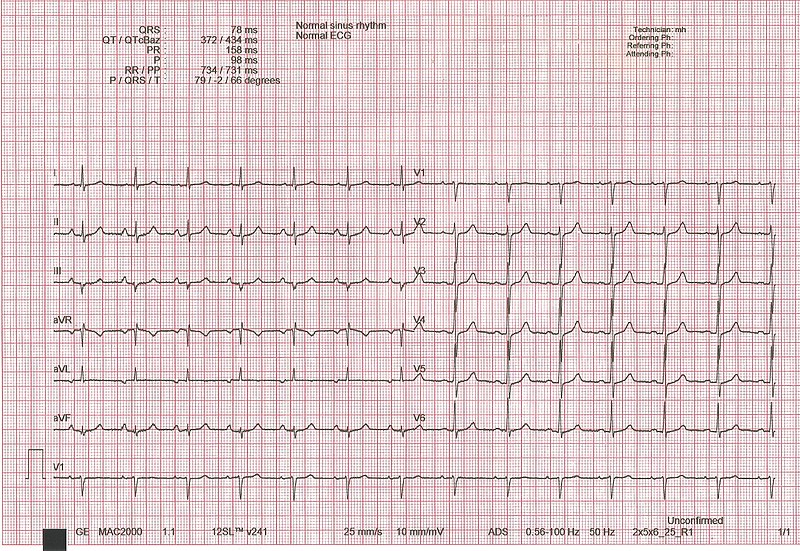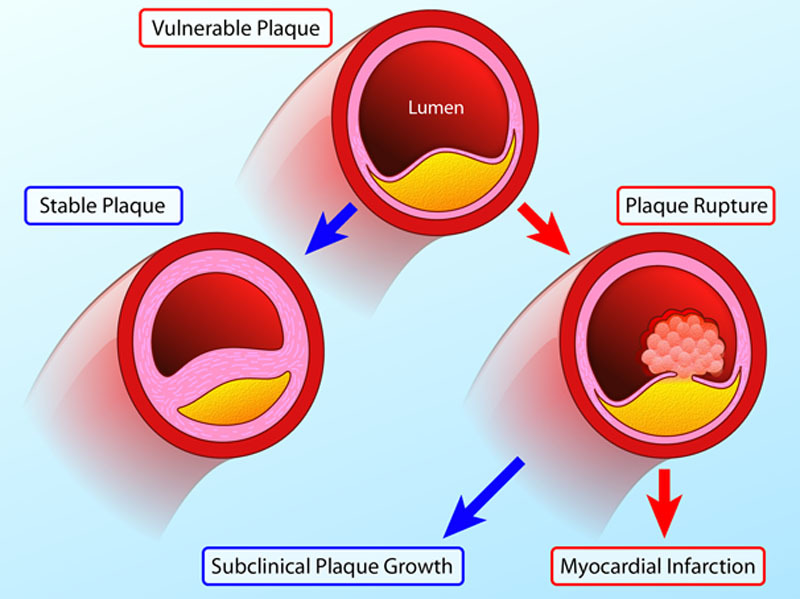Playlist
Show Playlist
Hide Playlist
STEMI and NSTEMI: Special Inferior Wall Myocardial Infarction
-
Slides Cardiovascular STEMI and NSTEMI.pdf
-
Download Lecture Overview
00:01 Now, special inferior wall MIs. 00:04 Quickly we are going to run though this, a true posterior MI. ST elevation in II, III, aVF, right coronary artery along with inferior leads. Tall R wave with ST depression in V1, V2. Now, what that means? I will tell you in a second. A posterior descending artery from either RCA or left circumflex. Now that posterior descending artery become very important to us. Does it not? In anatomy if you remember, now you refer to what is known as right dominant and left dominant. Majority of your patients will be right dominant right. That is because of posterior descending artery might be coming off of that. So what you need to take out of this for you clinically and any question that you might get from anatomy is what is that dictates or determines whether you are right dominant or left dominant? If it is right dominant, it is opposed to descending artery. If it arises from the RCA, obviously patients are right dominant. If it arises from your left circumflex, your patient is left dominant. 01:00 Majority of your patients will be right dominant. Keep that in mind. It will help you. ST depression and early precordial leads may actually not be reciprocal changes. Now this is a bit much in terms of information, but this is a posterior MI. At least, keep in mind that we have II, III, aVF with an ST elevation and keep in mind where you just explained posterior descending artery and its determination of dominants. 01:28 Take a look at right ventricular infarction. How does this even occur, right ventricular infarction? Once again we have the RCA and this would also be leads to II, III and aVF. Now because we are in the right ventricle, I want you to think of V4, not so much V5, V6 because that will take you to lateral. Profound hypotension with nitroglycerin, beta-blockers and administer fluids in your patient. Right ventricular infarction. You are worried about your patient not having proper output and hypotension, mean to say that what you are doing, you are causing preload to be decreased resulting in profound hypotension because the right ventricle isn't working properly. 02:12 Look for those type of clues in which you know your patient is suffering from RVI. 02:18 Now, ultimately it comes down to cardiac enzymes. On this table, the most important cardiac enzyme that I have referred to over and over again is troponin I. Now there is another enzyme that we will quickly discuss. That would be CKMB. And this is the table format in which we are showing you the cardiac enzyme, but I would like for you to focus on this graph. I'm gonna walk you through this so that you clearly see why it is the troponin I is the gold standard of your cardiac enzymes. Now, to back up for a second, please. Would you find any cardiac enzyme to be elevated in angina? No, you do not. I do not care if it is stable or unstable. 02:59 You are not going to find elevated cardiac enzyme. Keep that in mind. It is that black and white. 03:04 It has to be. Now if you go into myocardial infarction, sure. Now the one that you are paying attention to, you see the long dash green line, the troponins. The X-axis here represents the days and the time. The Y-axis represents the amount of concentration. 03:24 So the dash long lines are troponin elevates immediately at 24 hours. Look how long it lasts, a week. So very difficult for you to miss an MI in a patient if you are measuring troponin. Hopefully, it is not beyond a week, with that I don't even want to say, but anyhow the other important component is the CKMB. It used to be the gold standard. Now pretty much the same reason because it is elevated within 24 hours, but the reason that troponin trumps it, what kind of troponin by the way? I. The reason that it trumps it is because CKMB disappears, how long? Three days, it has gone. Now if you did find a CKMB to be elevated beyond three days, then what do you know about your patient? Had a re-infarct. Now there is something called LDH isoenzyme flip in which the normal an LDH type II is then replaced by LDH type I. Just know that it exists. But your goal standard would be troponin, understand the significance of your CKMB rising above or beyond day three.
About the Lecture
The lecture STEMI and NSTEMI: Special Inferior Wall Myocardial Infarction by Carlo Raj, MD is from the course Ischemic Heart Disease: Basic Principles with Carlo Raj.
Included Quiz Questions
In an inferior myocardial infarction with ST elevation in leads II, III, aVF, what confirms a diagnosis of right ventricular infarction?
- ST elevation in V4R
- ST elevation in V1
- ST elevation in V5-6
- Hypotension
- Atrioventricular block
What is the major difference in management between a right ventricular infarct and all other types of myocardial infarction?
- Preload must be increased to improve hypotension
- Preload must be reduced to improve hypotension
- Afterload must be increased to improve hypotension
- Afterload must be reduced to improve hypertension
- Preload must be increased to improve hypertension
A patient presents with atypical chest pain, positive troponin I, and a negative CK-MB. Results are confirmed over 12 hours. When did the myocardial infarction most likely occur?
- 3-7 days ago
- 1-3 days ago
- 2-4 weeks ago
- 12-24 hours
- More than one month ago
Customer reviews
3,0 of 5 stars
| 5 Stars |
|
0 |
| 4 Stars |
|
0 |
| 3 Stars |
|
1 |
| 2 Stars |
|
0 |
| 1 Star |
|
0 |
too many information that is too advanced slides were read not explained








